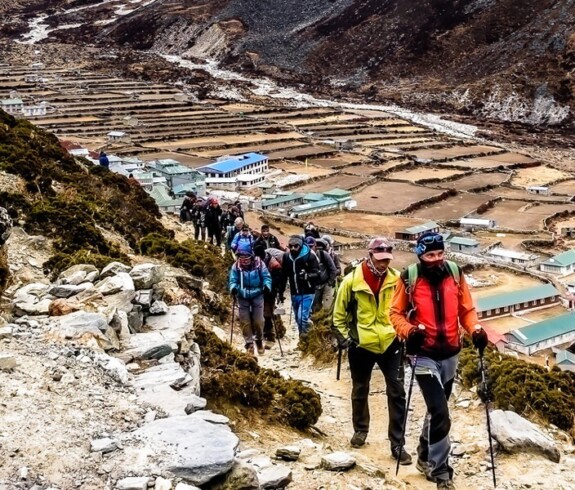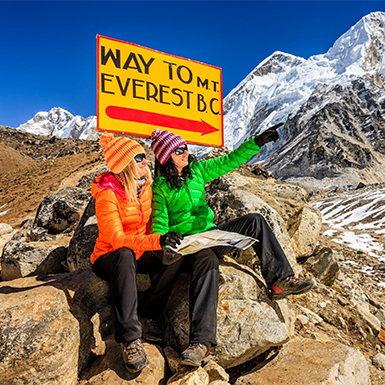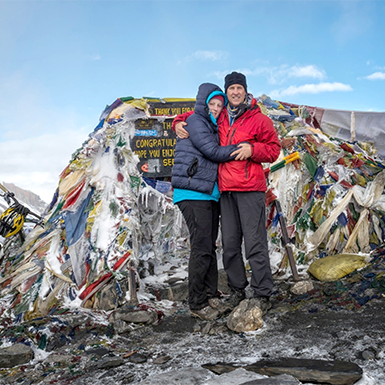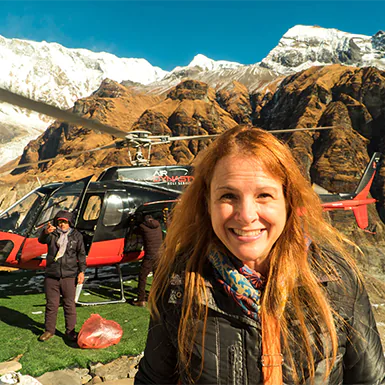The trekking and expeditions in Nepal are not as challenging as you consider them to be due to the diverse topography. Around the remote route of Nepal, there lie the genuine beauties of nature. Setting away from a crowded community offers the masterpiece of village life.
The shining peaks of mountain ranges wait for your sight shot at the Northern side of Nepal. When we talk about trekking and expeditions, it is questionable regarding the reality of the adventure. Apart from reaching dream destinations, what does the route seem like? There are a few confrontations, but they are worth the effort.
Being the land of the Himalayas, Nepal has several admirable trekking spots. As I heard, Everest Base Camp comes first. Likewise, Annapurna Base Camp is crowded due to the diverse sightseeing mountain ranges. Apart from this, Annapurna Base Camp has the maximum number of visitors because of its accommodation and hospitality facilities.
The reality of Everest Base Camp Trek
No matter where you trek around Nepal, you always get to interact with the never-ending beauties of flora and fauna on the way and EBC is one of the best at it.
Nepal sets a discrete impression depending on sightseeing, from the highest peaks to the world’s deepest gorge. Here is the Reality of trekking and expeditions in Everest Base Camp.
Reality 1. It is not tough to walk to Everest Base Camp.
Most sources of past travelers’ feedback prove that marching around Everest Base Camp is not as challenging as you consider it. The steady pace of marching for 6-7 hours daily is enough for you to complete it. Likewise, the Everest Base Camp trek has a long day of acclimatization that leads to a doubtless journey.
The journey is incredible, spotting to the elevation of 5545 meters at Kala Patthar with no realization of the tiredness. Hence, the trekking journey to Everest Base Camp is moderately fit for beginners. It is doubtless for the expert travelers.
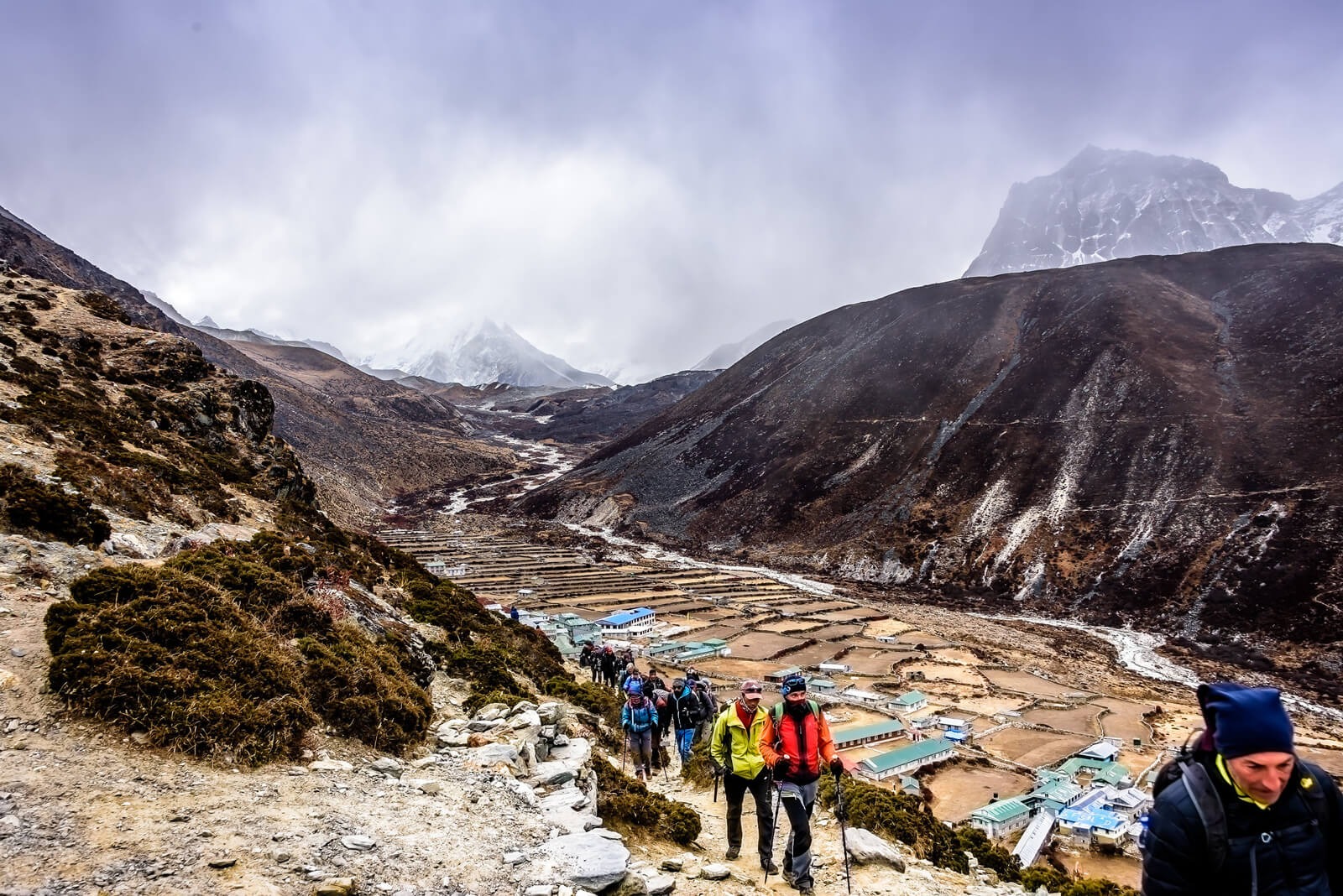
Reality 2. Everest Base Camp is freezing cold.
There is the freezing and chilly condition of the weather at Everest Base Camp. Since the altitude of EBC lies up to 5545 meters, it is evident that the region is massively cold. However, the highest temperature is about -17 degrees Celsius during the winter. It is familiar that the temperature of EBC depends on the seasons.
Spring and Autumn are the highest periods to travel to EBC. During the day of Spring, the temperature remains at 15 degrees. Whereas, at night, the weather drops down to -1 degrees Celsius. Likewise, the temperature is 17 degrees during the day in Autumn and – 8 degrees Celsius at night.
However, the monsoon brings the warmest season for EBC. It is about 22 degrees in the day and 4 degrees at night. Furthermore, winter is intensely cold as the temperature is already -5 degrees during the day and -15 degrees at night.
Reality 3. Animals do live in Mount Everest.
There live extreme species of endangered wildlife species, being the highest elevation of the mountain on the earth. The main locations are snow leopards and musk deer. You interact with the high species entering the Sagarmatha Nation Park conservational area.
Likewise, the wildlife amuses Himalayan Black Bear, Red Pandas, and Himalayan Tahr at the lower part of Everest. Furry marmots seem adorable, whereas the Pika constantly runs away from the humans. Beautiful endangered species like Gray Langur, Mountain Weasel, and Yellow-throated Marten are going to Everest.
Reality 4. There is very little snowfall at Everest Base Camp.
Surprisingly, there is not much snowfall at Everest Base Camp. The area is dry and chilly in winter when you can witness heavy snowfall. However, climbing to the Everest base camp is possible even during January due to little precipitation.
However, during November, rainfall is wholly low. But, the monsoon also has only a maximum of 18 inches of snowfall. The precipitation wind flows towards Everest’s top once you begin to proceed to the higher elevation. That witnesses you with the bulk of snow when you capture some moments.
Reality 5. It’s not so expensive to trek to EBC.
There are several agencies offering trekking in Nepal around Everest Base camp. Peregrine treks and tours are admirable for their reasonable price and quality services for ages. It costs only 1500 USD per person as the standard charge to trek around Everest Base Camp.
However, the actual cost depends on the number of bookings and groups during the trial. The price includes your travel insurance and the cost of accommodation for 15-day trips. Furthermore, the charge lists breakfast at Kathmandu and three meals during the trekking period.
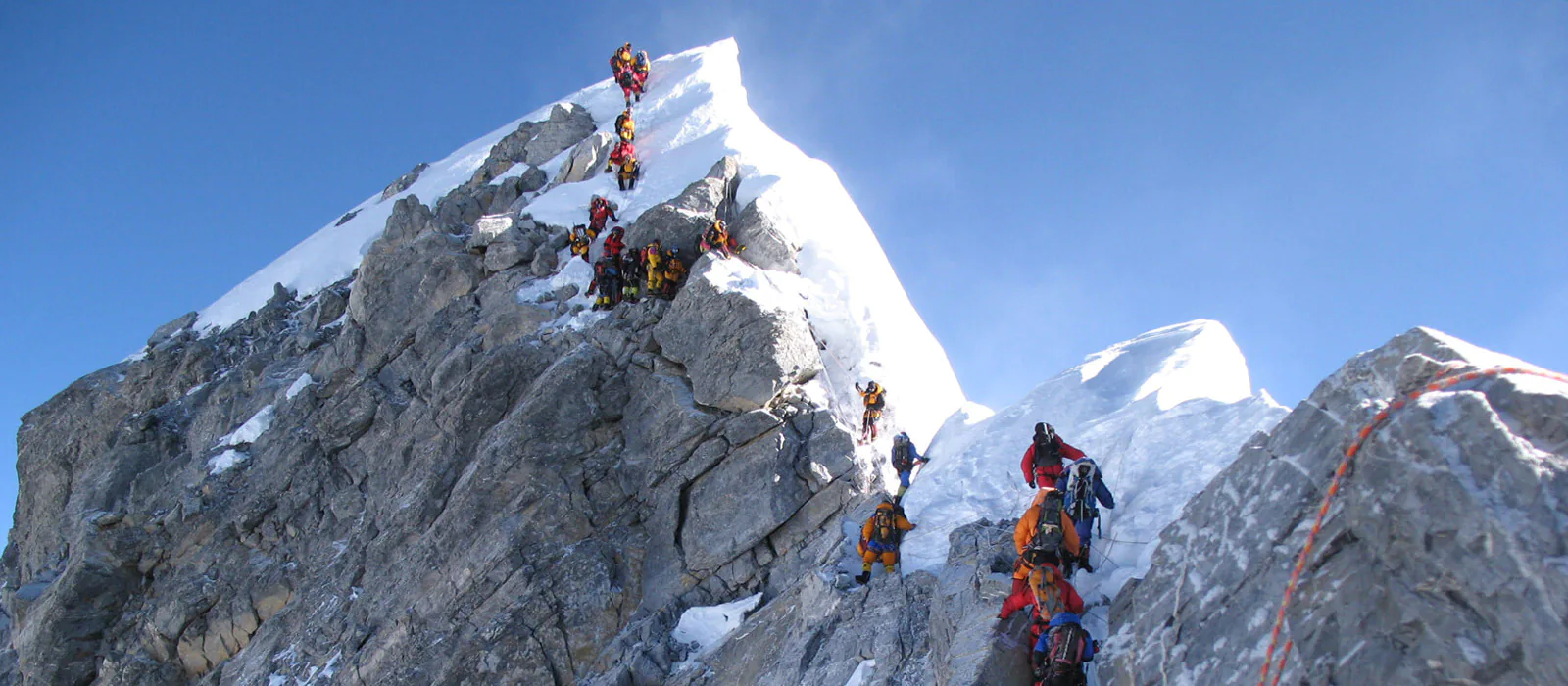
Reality 6. There are many routes to trek to Everest.
Everest Base Camp has diverse routes. The cost differs accordingly from flying in a helicopter to a marching path. Likewise, the price depends on the days you are willing to spend and explore the desired destinations. EBC helicopter tour, EBC trek, Everest Panorama trekking, and Everest Three Passes trek are the most favorable trips to Everest Base camp.
When talking about the cost, Peregrine Treks offers the peakiest deluxe trip to Everest camp Helicopter tour with USD 2000. Likewise, the Everest Three Passes Trek cost is the same as USD 2000. The most popular trek of EBC is USD 1650, and the 11-day Everest Panorama trekking is USD 1200 per person.
Reality 7. Everest base camp is not more brutal than Kilimanjaro.
No, Everest Base Camp is not more complicated than Kilimanjaro, although the trekking days are shorter in Kilimanjaro trekking than in EBC. Even the routes are challenging and comparatively high in risk in Kilimanjaro trekking. As the days are shorter in Kilimanjaro, the trekker does not have enough time for acclimatization.
For your information, summit night in Kilimanjaro is more challenging than anything in the entire journey of Everest base camping. Thus, you must have intensive fitness to acquire the summit of Kilimanjaro as it is still unbeatably challenging. So, choose the trekking destination depending on your age, schedule, and physical fitness.
[contact-form-7 id=”6913″ title=”Inquiry From – Blog”]
Reality 8. You can not go to Everest Base Camp alone.
With the flight from Rammechap to Lukla, the EBC trek lasts for 11 days. Since the rule issued by the Government of Nepal, Foreign tourists can not trek to Everest Base camp self-sufficiently without a potter or guide.
It is a must to take a guide and a potter with you. They make your trek well-managed and less tiring. Potter can arrange to carry your bag packs while the guide assists you through the route with all the arrangements.
Reality 9. You can see Mount Everest from Everest Base Camp.
Yes, you can look at Mt. Everest from Everest base camp. Although Mt. Everest is not visible on the first day of the trek, you gradually get to sightsee as the days pass. Finally, once you are at Kalapathhar, the trail’s highest elevation at 5545 meters, you can determine the stunning sparkle of Everest from the closest viewpoint.
Is not this trek the golden opportunity for you to experience the world’s tallest peak without climbing it? Apart from Mt. Everest, you can view world-famous mountains such as Cho Oyu, Nuptse, northern flank, Mt. Lhotse, and Changtse.
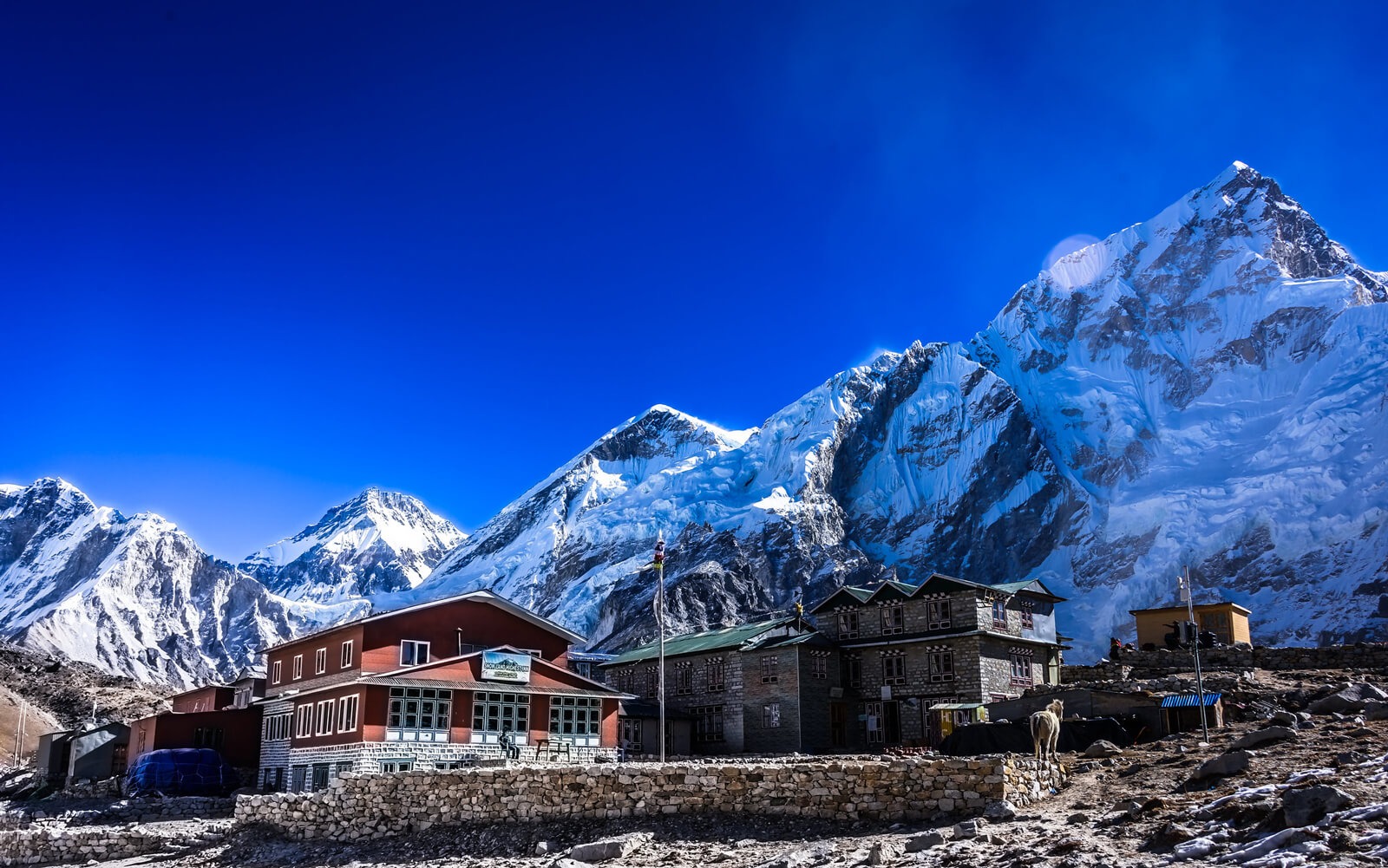
Reality 10. People have died trekking to Everest Base Camp.
Yes, people have died while marching around Everest Base Camp. About 3–5 trekkers die each year at minimum and 12–15 deaths at their maximum during the EBC journey. Dead bodies are at glaciers and around the diverse trekking spots. However, the death rate is due to improper acclimatization and personal irresponsibility.
That is why it is important to take immediate treatment against altitude sickness. However, the death rate is comparatively less than mountaineering to Everest. Although the trek to Everest Base Camp is not climbing, there are records of trekkers dying when trekking to Everest Base Camp.
Reality 11. Mount Everest is 20.5 km from its base Camp.
The gradual steps from base camp to Everest is 20.5 Km. It is the factor to follow the acclimatization as it takes about one and a half months to complete the summit of Everest from Base camp. However, the trekker stays safe by decamping after reaching each spot to avoid sickness due to altitude and high-altitude Pulmonary Edema.
When the trekking begins from Lukla to Base Camp, a trekker must complete 130 km of the walking path. Passing through the dense flora follows you through the challenging trails.
Reality 12. Everest Base Camp is worth the hype but not just for mountain views.
Reaching Everest Base Camp is not worth it if you are here to out-looking Everest. However, you must stick to Kalapathhar to witness the sunrise striking the top of Everest. From this spot, you can experience the closest view of Everest. Although you cannot note Everest in the closet form, some things will impress you.
Yes, the cinematic mountain flight to Lukla is the first thing that impresses you blindly. Furthermore, the journey from Lukla to Everest base camp is full of warm welcomes from local people and snow-capped walking paths. Besides, the exotic flora and fauna are always there to impress you.
Reality 13. Be mentally and physically sound before coming for the Everest Base Camp Trek.
As mentioned, EBC is suitable for beginner trekkers. You are responsible for 6–10 hours of physical exercise per week. However, you do not require intensive treatment, but you must be physically and mentally well prepared to walk 6–7 hours per day.
When you set your step out for Everest trekking, it becomes plain to feel tired, but it depends on your physical strength. So, we recommend you go jogging, cycling, swimming, or any physical fitness before getting into the expedition.
Reality 14. In 11 days, you will complete a 130 km long EBC Trek.
Speaking of the facts, the travel agency sets the actual itinerary to stick out to EBC. Nevertheless, you do not want to suffer from altitude sickness, so there are days when you will not be trekking at all. Likewise, you do not want to spend most days without trekking per your schedule and cost.
For your convenience, Peregrine trek and tours lay 15 days of itinerary, of which 11 days are for marching and acclimatization. Yes, the more period you spend, the higher it costs. Within 11 days, you will be marching 130 km to Everest Base camp.
[contact-form-7 id=”6913″ title=”Inquiry From – Blog”]
Reality 15. Late February and Late November are the best months for Trek EBC.
All the seasons are suitable for a trek around the path of the Himalayas in Nepal. However, Spring and Autumn are the chief periods to visit Everest Base Camp. Mostly, the month of October is full of crowds visiting EBC.
Late February and late November are the best months to get involved in Everest Base camp trekking. The climate during Spring remains moderate, and the skies are clear. Likewise, the Autumn and Monsoon seasons are also suitable. Due to the less rainfall in the Everest region, the monsoon is not at high risk.
Reality 16. This trek is not advised for children and the elderly.
Although you can hike alone to Everest base camp, that does not mean anyone can march there. However, you require training in physical fitness to complete the trek.
The children and elderly citizens cannot make up for this trek. For the children, physical strength does not support them enough. Likewise, it is likely for older people to suffer from altitude sickness that may result in severe illness.
You need to get access to permits to go for Everest region trekking. Apart from physical fitness, it is the factor of responsible travel that makes your trek a success. You must stay under the rules and regulations of the trekker to complete this expedition.
Reality 17. Hillary Step still exists.
The Hillary Step has 12 meters of distance before reaching the summit of Everest. However, the step is dangerous as the climber must follow the narrow path of vertical rock slopes as the last challenging step to reach the top.
Hillary Step is known as the vicious part of typical Nepali climbing. Sometimes, the snowfall collapses the rock with ice and snow on the steps. Recently, the permanent rope has been there for the climb of Hillary Step. The report said that the Hillary Step was gone due to the 2015 earthquake, but recently there has been news that the Hillary Step still exists.
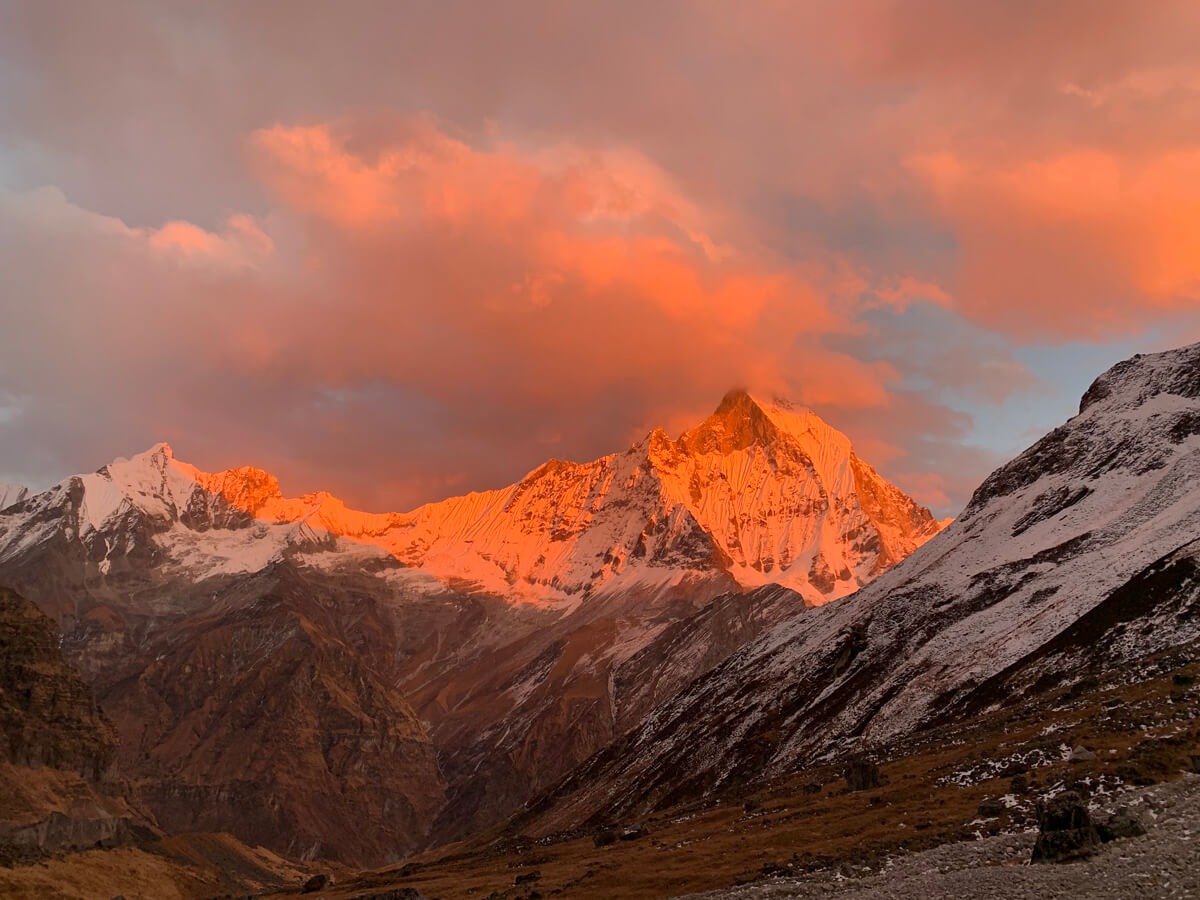
The Reality of Annapurna Base Camp Trek
Located at 4130 meters, the Annapurna base camp trek has a dramatic design with a diverse spot for the trekker to rejoice.
Reality 1. ABC Trek is favorable for most trekkers.
We all know the factors; marching to Annapurna base camp is not risky. The adventurous path around the dense forest hills and the unending river lets you drive your attention toward the stunning Himalayas.
You require a moderate level of fitness to complete the trek. However, as less effort is required, this trek is blindly favorable to most trekkers, and they rejoice to the fullest. Thus, it would help if you learned about the distinct trekking spots around the Annapurna region.
Reality 2. Climbing Annapurna is harder than climbing K2.
Yes, due to the unpredictable climatic conditions and the section of elements of Annapurna, it is more challenging than K2. Being the 10th highest peak on the earth, Annapurna receives a high amount of velocity and precipitation, uncertain in any season.
Moreover, the fatality rate in Annapurna massif is higher than in any mountains worldwide. Due to the topography and climatic conditions, it is hard to supply rescue or emergency medication if required. However, k2 falls among the firm climb on the earth but is not precisely as hard as Annapurna climbing.
Reality 3. Annapurna Peak has killed the most climbers.
The 10th highest mountain globally, Annapurna has killed the most climbers. As per the sources, 191 climbers attempted to climb the Annapurna massif. Around 63 of them have lost their lives while climbing the mountain.
There was the worst disaster in the history of Nepal in October 2014 during the climb. In this incident, 43 climbers lost their lives due to snowstorms around the mountains. Hence, Annapurna has a 33 percent fatality of climbers, the highest in the world.
Reality 4. For Winter, Annapurna Trek is better.
Trekking to each station is not facile. Anyway, you must set a passage through little challenges. Annapurna base camp lies at 4130 meters, whereas Everest base camp lies at 5380 meters. Spring and Autumn are favorable for your trek on each base camp, depending on the season.
The Everest region is much colder than the Annapurna region, located at a higher altitude. Likewise, if you plan to trek during the monsoon, go for EBC. There is very little precipitation since it lies at a higher altitude. But the region is intensively colder than the Annapurna region and is about -10 Celsius, so it is better to go to Annapurna base camp during winter.
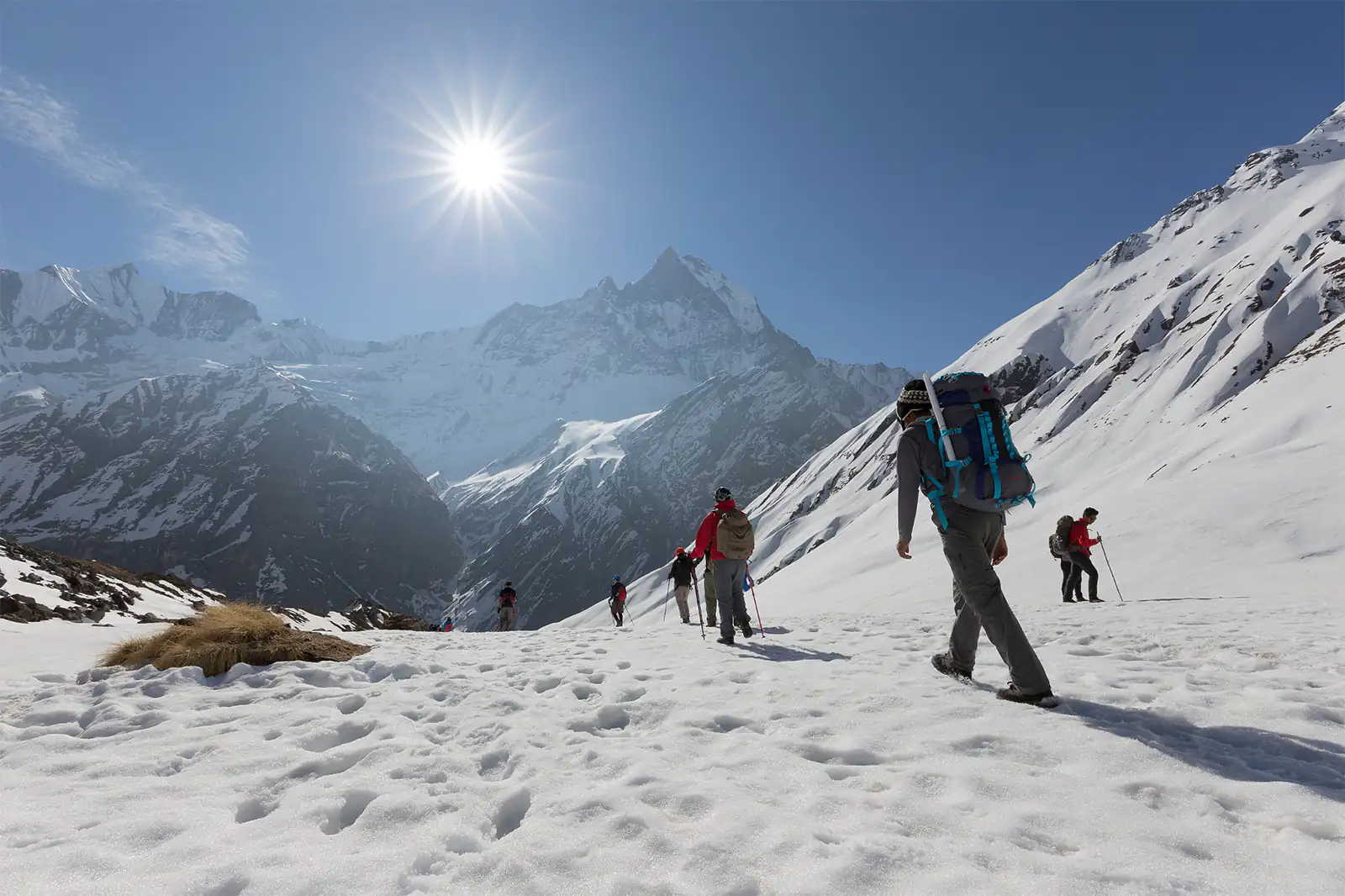
Reality 5. The Annapurna base camp trek is moderately dangerous.
The pathway of Annapurna base camp falls among the moderate doubt trek. You do not need to be excessively fit to complete the expedition of Annapurna base camp. However, you are required to have some physical fitness.
Jogging, swimming, and physical exercise are preferable before trekking. The trail is full of adventurous sites plus massive interaction of flora and fauna. Trekking to Annapurna base camp is not dangerous until you suffer altitude sickness.
For this reason, you must always be careful about altitude sickness and follow acclimatization. However, trekking during the monsoon can be dangerous as the steps get watery and wet.
Reality 6. Trekking is easy but climbing is dangerous.
Trekking and climbing to Annapurna have distinct impressions and factors. Trekking is facile, but mountaineering to Annapurna is the most dangerous climb in the world. Yes, there are about 63 deaths that have occurred in the Annapurna climb.
Due to the unpredictable climate and the massive precipitation, Annapurna massif climbing is dangerous. There is intense precipitation. It results in the pathway of Annapurna climb to keep changing with high death rates.
Reality 7. Annapurna is the deadliest mountain in the world.
Annapurna is known as the deadliest mountain in the world. It has about a 33 percent fatality rate among climbers. This deadliest mountain stands as the 10th highest peak in the world.
Although there are taller mountains, Annapurna has unpredictable weather conditions that make it the deadliest. Likewise, it is hard to supply emergency medication and rescue there due to challenging topography.
Reality 8. For scenic views, the Annapurna Circuit Trek is better.
The 15-day trial of the Annapurna Circuit is worth the effort. Annapurna circuit has a path full of unending adventures plus the highly populated settlement. Furthermore, this trekking trail is also known as the apple pie circuit. You can evaluate the distinct topography as apple farms are around the territory once you enter the Annapurna region.
The massive ranges of the Himalayas have the settlement of endangered species of flora and fauna. Due to the higher altitude of 5416 meters of the trail, the Annapurna circuit is unsuitable for children and elderly citizens.
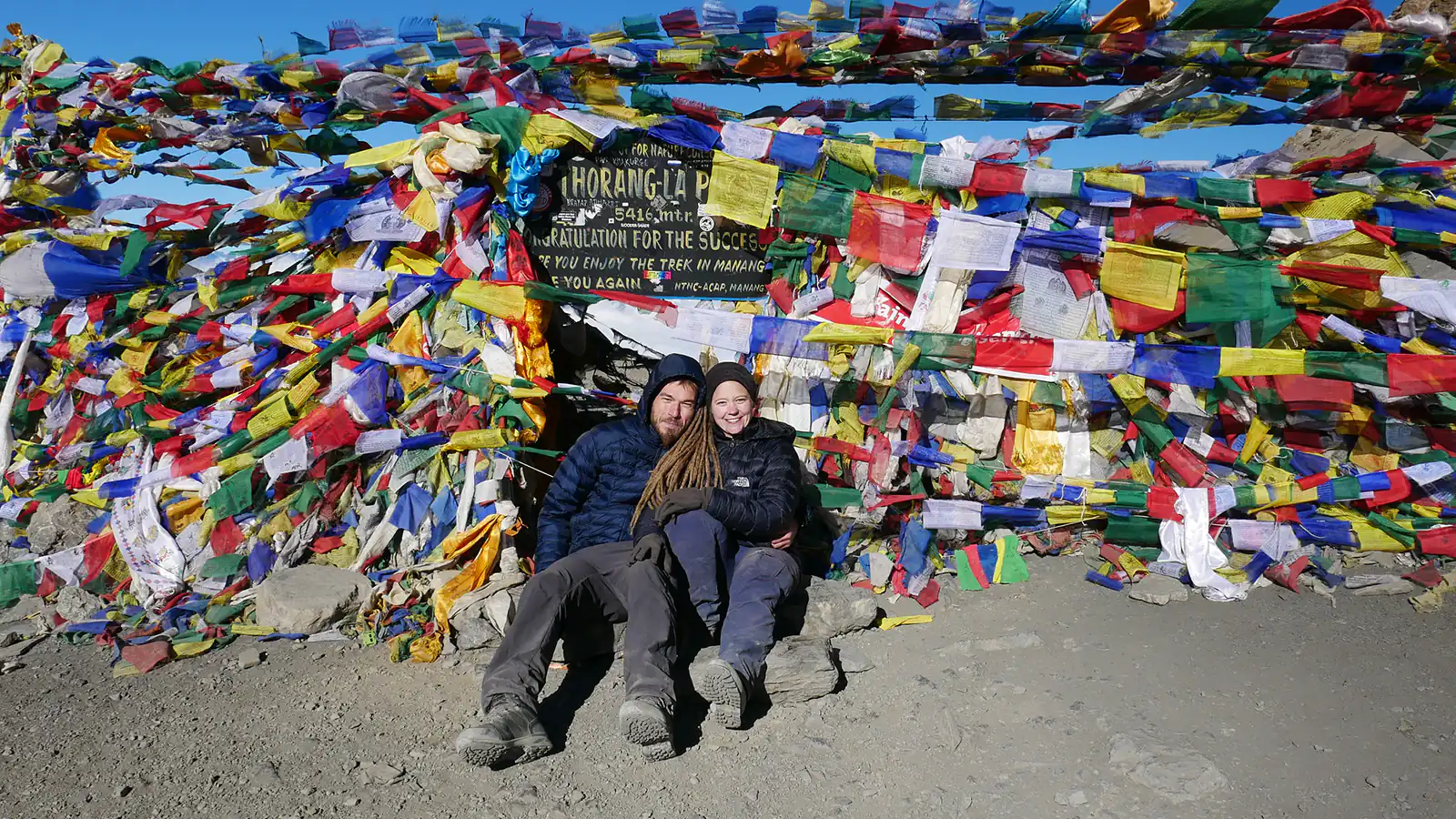

Reality 9. The 14-Day Trek is ideal for Annapurna base camp.
Several agencies are offering a trek to Annapurna base camp. However, the most minor of them provides you with a favorable schedule for the Annapurna base camp trek. Peregrine treks and tours are one of them.
Our expertise has set 14 days of the itinerary to complete this trek by initializing the proper period to trail around the Annapurna base camp. It includes sightseeing around Kathmandu Valley as well.
However, you can inform our team if you prefer to extend or shorten the days during the Annapurna base camp. You can elongate to roam around Pokhara Valley or visit nearby holiday destinations such as Chitwan and Lumbini.
Reality 10. You need a guide for the Annapurna base camp.
You do need a guide during the Annapurna base camp trek. And, you need to acquire permission to trail around the Annapurna region. They will make all the arrangements for your journey. Besides a guide, you can hire a potter to carry all the stuff required during the Annapurna base camp.
Reality 11. You need moderate fitness before trekking ABC.
The trek to Annapurna base camp is moderately complex. Even the beginner traveler finds the trip facile. But you must be mentally and physically well prepared before the trial. Yes, as you need to set the habit of involving yourself in any physical exercise.
It can be jogging, swimming, or cycling. However, make sure to have a regular weekly exercise of about 6–10 hours per week. As you have to walk for 5–6 hours on average during the trek, you must prepare before the marching starts.
Also, you must have the mental strength to prepare yourself to remain safe against altitude sickness. As you proceed to the higher elevation, it is apparent to suffer from altitude sickness. Train yourself to fight against any problems.
[contact-form-7 id=”6913″ title=”Inquiry From – Blog”]
Reality 12. 1,500 $ is required for the Annapurna Circuit Trek.
On the 15 days of the itinerary, the Annapurna circuit trek costs USD 1500 per person. However, the cost is relatively less when you proceed with the group. For the elevation of 5416 meters of Thorong La pass, the cost set by Peregrine treks for the Annapurna circuit is wholly reasonable.
It includes the charge of breakfast during Kathmandu and Pokhara Valley and three meals during trekking. However, the actual price depends upon the number of groups and people for the trekking. Besides, the travel agencies do not look after your expenses.
Reality 13. You can not see Everest from Annapurna base camp.
Although each station lies on the Himalayas, you cannot see Everest from the Annapurna base camp. The mountains you can reach from ABC are the Annapurna ranges, Macchapuchre, Dhaulagiri, Hinuchuli, Mardi Himal, Nilgiri, etc.
However, you cannot look at Mt. Everest from the Annapurna base camp as Everest lies in the northeast, and Annapurna base camp lies in the northwest. Hence, you must make a trip for two diverse trekking packages to physically look at Everest and Annapurna.
Reality 14. It is easier to trek the Annapurna base camp compared to the Everest base camp.
The trek to EBC is riskier than the Annapurna base camp. The main factor affecting trekking in Nepal is altitude. You must trek up to 4130 meters in Annapurna Base camp. However, you must trek up to 5545 meters during Everest base camp.
Apart from these, you should travel more in a shorter period in the Everest base camp trek. It causes the risk of leading to altitude sickness.
Since you are trekking towards the highest mountain on the earth, the price is automatically higher than other trekking in Nepal. Hence, trekking to the Everest base camp is economically and physically more challenging than the Annapurna base camp.
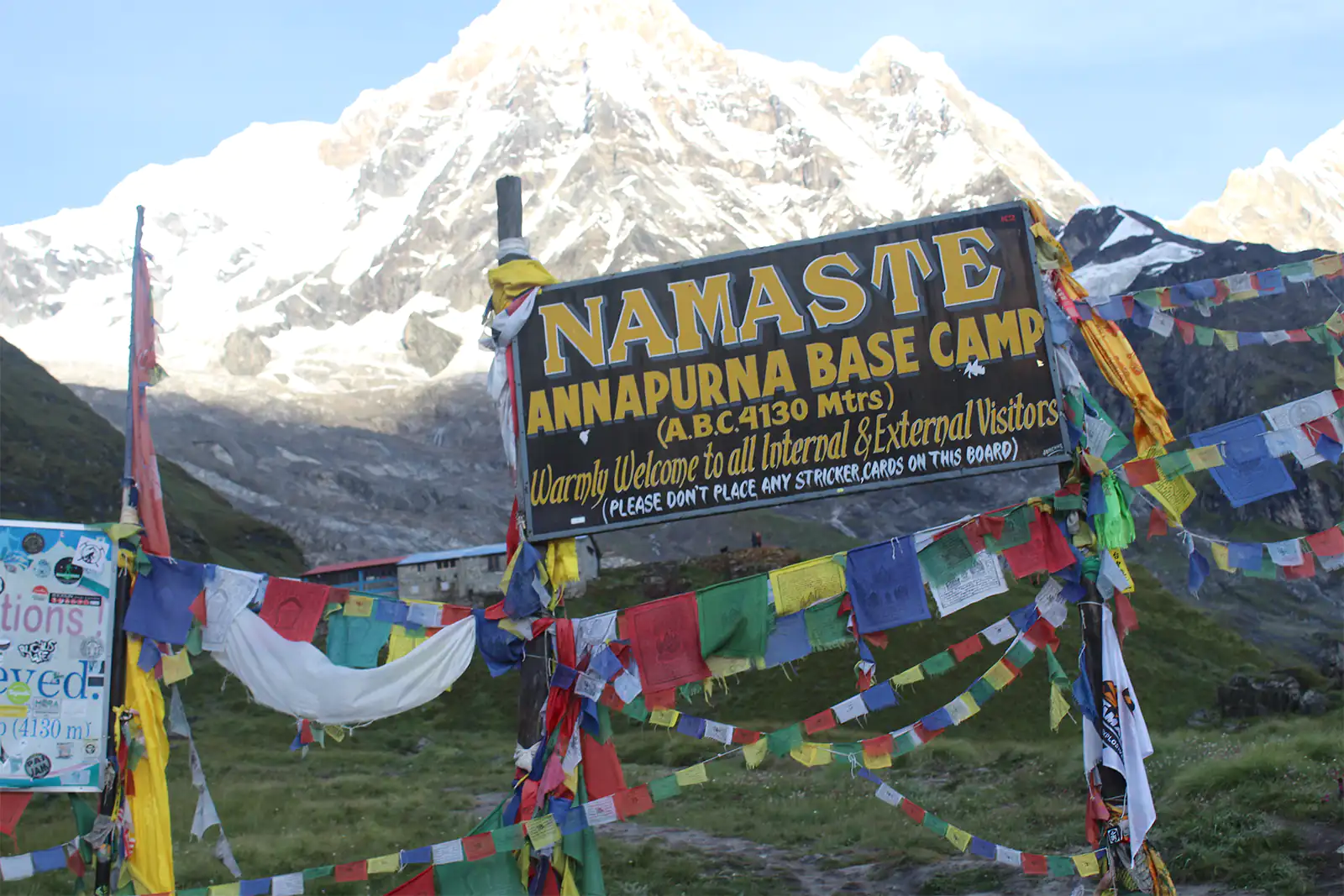
Reality 15. Annapurna Base Camp trek cost 1250$.
Trekking in Nepal among the lush flora and fauna forest might be intensively costly. But Peregrine treks and tours offer the cost per person to march on Annapurna base camp at just USD 1250. However, the price is less if you trek in a group.
Likewise, the exact pricing depends upon the comfort you prefer. It depends on the hotel bedroom to transportation preferences. Besides, the charges do not include your expenses such as drinking water, hot water tub, and internet during trekking and two-time meals while at Pokhara and Kathmandu Valley.
Conclusion
This observation of trekking spots makes you consider the facts of trekking and expeditions in Nepal. Trekking and expediting in Nepal are not risky in most regions. Among these, Everest and Annapurna are admirable.
Other trekking spots require more trekking days with lots of challenging steps. However, mountaineering is risky in Nepal, but all the efforts are worth it.
In Nepal, Peregrine treks and tours arrange trekking around Everest, Annapurna, Langtang, and off-beaten trails. The trekking routes are full of endangered species of flora and fauna, plus a massive distinction in topography. The snow-capped Rocky Mountains wait for your arrival all over the northern trekking trail of Nepal.
Most trekking regions are underdeveloped due to the beggarly economy as it gives the taste of the hardship of life. It also makes you aware of people’s local lives across the nation. Hence, it is essential to understand the realism during trekking and expeditions in Nepal before participating in any trekking activities.
